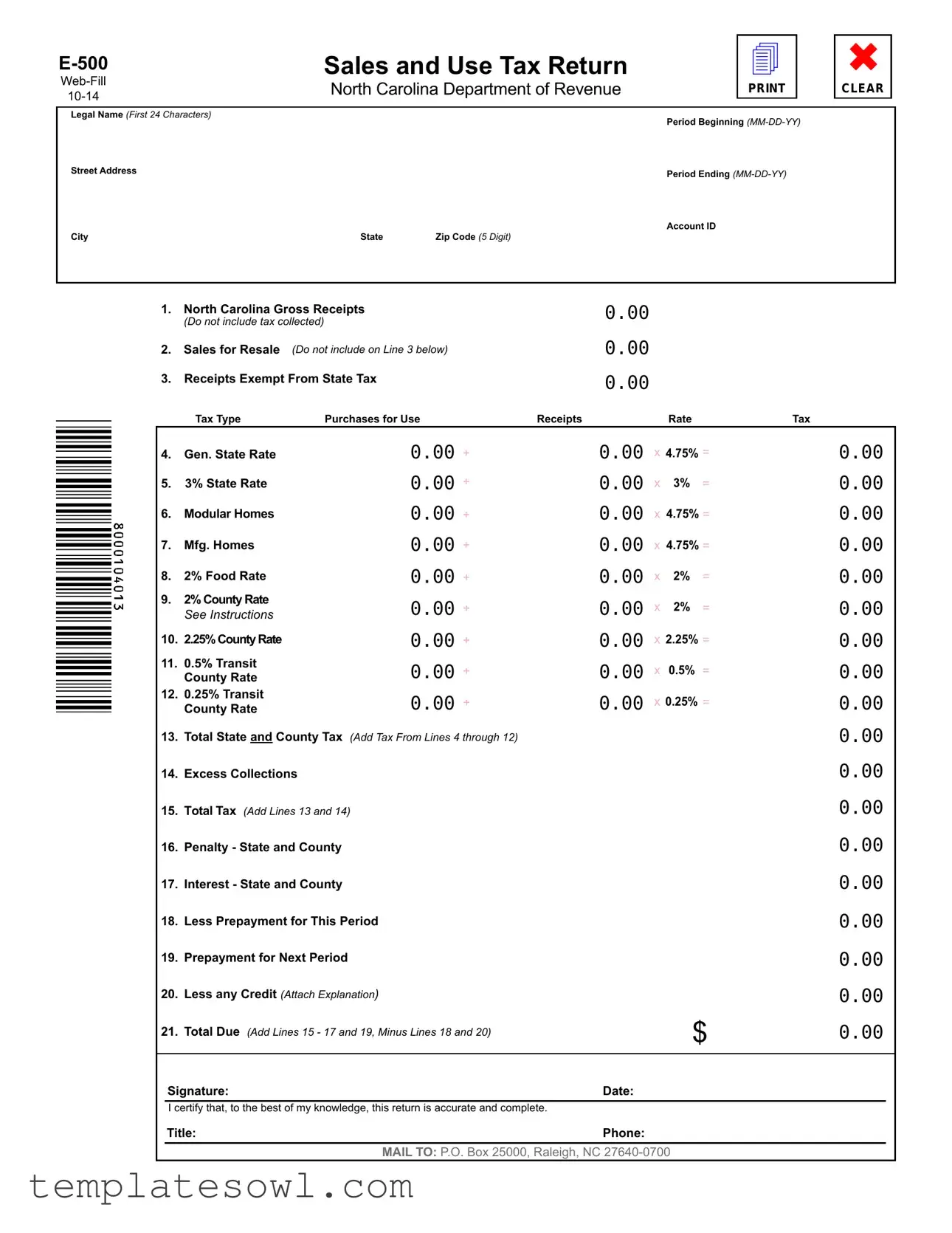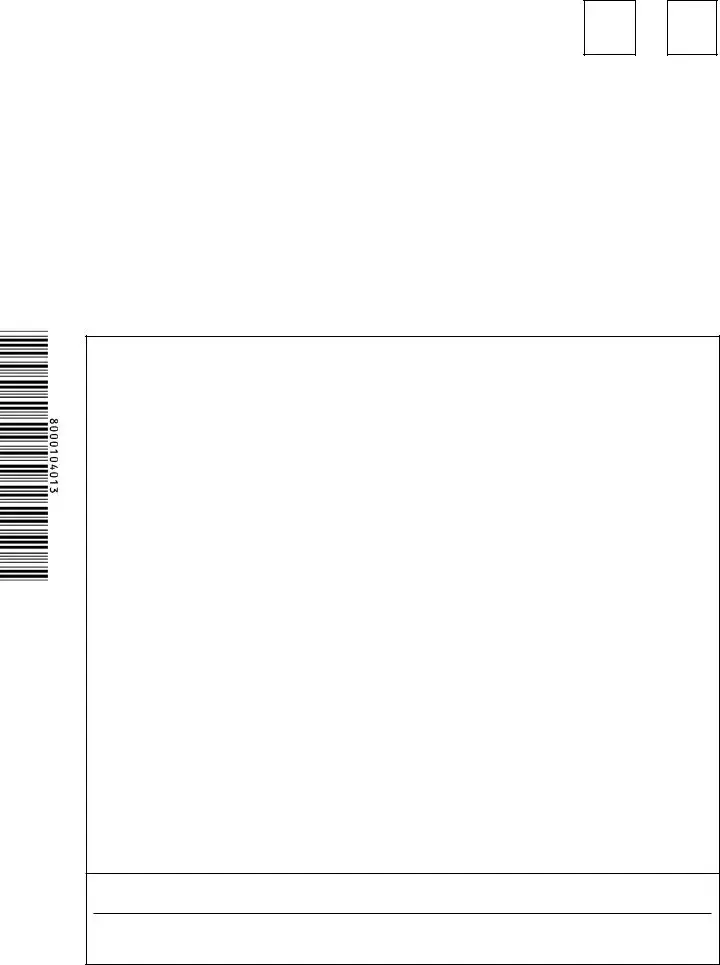What is the E 500 form?
The E 500 form is the Sales and Use Tax Return used by businesses in North Carolina to report their sales and use tax obligations. It helps the North Carolina Department of Revenue track how much tax a business has collected and needs to remit for a specific reporting period.
Who needs to file the E 500 form?
Any business that sells goods or services in North Carolina and is registered to collect sales tax must file the E 500 form. This includes retailers, wholesalers, and service providers that are required to charge customers sales tax on their transactions.
How often do I need to file the E 500 form?
The frequency of filing the E 500 depends on your business’s sales volume and tax liability. Generally, businesses may need to file monthly, quarterly, or annually. You should check your specific filing frequency as designated by the North Carolina Department of Revenue for your account.
What information do I need to complete the E 500 form?
To complete the E 500 form, you'll need your legal business name, account ID, period of the report, gross receipts, and details on any exempt sales or sales for resale. You also need to calculate the applicable sales and use tax rates, including state and county tax rates, which are outlined on the form.
What happens if I fail to file the E 500 form on time?
If you fail to file the E 500 form on time, your business may incur penalties and interest charges. These can accumulate quickly, impacting your financial standing. It’s essential to file by the deadline to avoid these additional costs.
Can I amend my E 500 form after I have submitted it?
Yes, if you discover an error after submission, you can amend your E 500 form. You'll need to follow the specific process set by the North Carolina Department of Revenue for amendments, which typically involves submitting an amended return with the correct information.
Where should I send my completed E 500 form?
Once you have completed the E 500 form, you’ll need to mail it to the North Carolina Department of Revenue at P.O. Box 25000, Raleigh, NC 27640-0700. Ensure that you allow plenty of time for the form to arrive by the filing deadline.

